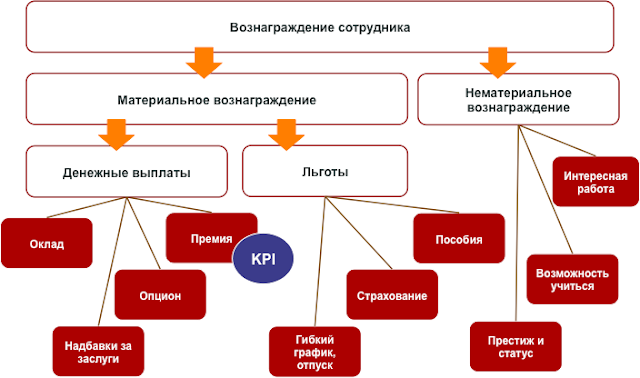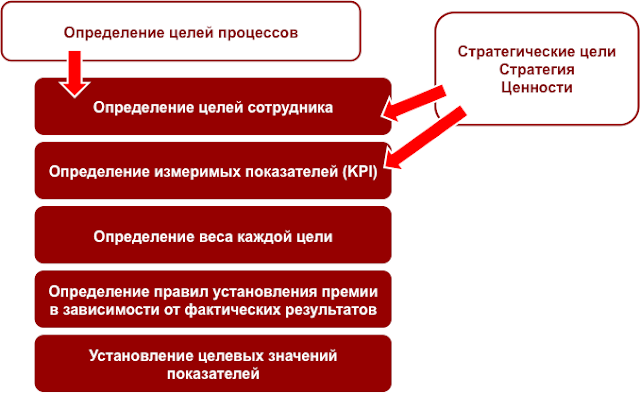The term strategy map has its origin in the Balanced Scorecard (BSC) concept of the mid-1990s. Since then, strategy map became a buzzword, a synonym of any visual representation of strategy. Below, we’ll discuss the most popular approach to strategy map design based on the original K&N Balanced Scorecard.
- How to Create a Strategy Map in 8 Steps (Infographic)
Why Use a Strategy Map
A classical geographical map represents abstraction of the world around us. Instead of dealing with trees, rivers, and roads on the map, we deal with areas of different colors and lines. In the same way, a strategy map is abstraction of business and its strategy. This abstraction helps to focus on what’s important now.
The main purpose of a strategy map is to visualize the strategy of an organization in a specific way. In its turn, the visualization improves strategy discussion and execution.
If you ask me why you need a strategy map, I would mention these three reasons one after the other:
- Visualization -> Discussion -> Execution
How to Create a Strategy Map
A strategy map concept comes from the K&N Balanced Scorecard. Here are key steps to creating a professional strategy map:
Step 1. Define Mission, Vision, Values
That’s the direction to the “north” for your organization. If you face uncertainty, these three will help you to make the best decisions.
Step 2. Define Four Perspectives
Finance, Customers, Internal, Innovations. You can confirm experimentally that your organization needs exactly these four. Non-profit organizations have their nuances, but the general idea is similar.
Step 3. Strategic Priorities
Strategic priorities are the top-level goals; normally, you have three main goals – serving clients better, improving operations, improving product.
Step 4. Define Business Goals
Fill in the perspectives of the strategy map with strategic business goals. There should be a cause-and-effect connection between the goals. The logic goes from top to bottom, and goals from lower perspectives explain how you plan to achieve the goals from higher perspectives.
Step 5. Describe Rationale
Rationale is a set of reasons why you decided to pick this very goal. If you use automation software, explain these reasons in the description field of the goal.
Step 6. Define Leading and Lagging Metrics
What do you mean by a business goal? The best way to answer this question is to define a pair of leading and lagging metrics with baseline and target values. Any vague goal definition becomes a specific one once performance metrics are defined.
Step 7. Define Initiatives
We mentioned “execution” as one of the purposes of the strategy map. Initiatives are your high-level action plans that explain how the strategy will be executed.
Step 8. Cascade
There should only be one top level strategy of the organization, still different business units need to focus on different parts of that strategy. Create local versions of the strategy maps with more specific goals and indicators.
Typical Mistakes of Strategy Mapping
As part of our Strategy Execution Training, we work with business professionals to create a prototype of their Balanced Scorecard strategy maps. Here are some typical mistakes that we see:
Mistake 1. Goals without Connections
The idea of the map is to show the cause-and-effect logic. If there is a goal without a connection to other goals (unless the connection is obvious), then the question is why we have that goal on the map.
Mistake 2. Focusing on Operational Goals
As mentioned before, the strategy map goals should be strategic ones. I’ve seen many cases where good strategic goals are linked to short-term binary goals like, for example, move a website to a different hosting platform.
Mistake 3. No Rationale
The choice of the goals is important; the reason for that choice is even more important. In many cases, these reasons are not explicitly described. As a result, during the next review of the strategy, it’s hard to understand why a certain goal exists on the map.
Mistake 4. Using Lagging Metrics Only
Lagging metrics help us to validate the achievement of the goal but don’t give a clue to how exactly to achieve them. Leading metrics quantify the success factors and give an answer to that question.
Mistake 5. Having a Top-Level Map Only
A top-level map won’t make a lot of sense for, let’s say, a marketing specialist who does a social media campaign. Top-level strategy needs to be aligned with the challenges of lower levels. Having a local version of a strategy map is a good idea.
Mistake 6. Having Too Many Goals
In my opinion, having more than 8-10 goals in each perspective is a red flag and a sign that the strategy was not properly cascaded. It’s like a to-do list – a list of 5-10 things works better than one of 100+ items.
Mistake 7. Mixing Goals and Metrics
“Increase sales by 15% within a year” sounds like a S.M.A.R.T. goal, but actually, it is not the best candidate for a strategy map. It’s a mix of a goal, metric, and a time frame. It won’t work for a strategy map. On step 1 of KPI template, we discussed the reasons and the solutions.
Mistake 8. Using Business Jargon
Goals like “Leverage business opportunities to satisfy customer demand” sound smart but don’t add any value to the discussion around strategy.
Strategy Map Template
I like the way BSC Designer software deals with strategy maps, but sometimes, it is worth using pen and paper for the brainstorming sessions. We do this on some of our live events, and I’d like to share with you a strategy map template that we use.
Getting Started Instructions
A strategy map template includes four perspectives. The rectangles inside the perspectives represent business goals.
A business goal includes several lines to fill in:
- Use the first line to formulate the name of the goal.
- Use the two lines with the “clipboard” icon to write down some initiatives and some relevant budget or timing information.
- Use the first “KPI” line to write down leading KPIs for this business goal.
- Use the second “KPI” line to write down lagging KPIs for the business goal.
Once you’ve sorted out the ideas about your strategy, go ahead and automate goals, initiatives, and KPIs with the BSC Designer tool.
Strategy Map Examples
Find below some examples of the strategy maps created with BSC Designer Online. You can sign-up with a free account and get immediate access to those templates.
A typical paper-version Balanced Scorecard designed by strategy consultants
Learning from Tesco Strategy Map and Scorecard
Также доступно на русском языке
A great lesson of how Balanced Scorecard works can be learned from global retailer Tesco. This company is known for its state of art Business Intelligence (BI) system. Balanced Scorecard is published yearly on tescoplc.com as part of Tesco’s BI system and is a must-see business performance tool. It even has its own name, “steering wheel.”
It is not classical BSC
If you ever start discussions about BSC or what BSC is, you’ll end up with some expert saying that BSC is not what you have in your company because you don’t have some important component. As was discussed before, there is no fixed recipe for the BSC.
Companies use this framework and modify it according to their needs. What is more important is that the company sees the improvement in business performance.
Tesco did the same trick. Taking a classical Balanced Scorecard as a framework method and adopting it to the needs of the company.
Let’s have a quick look at what was modified and what is missing:
- In the very beginning, it is stated that there are five perspectives: community, operations, people, finance, customer. Remember that classical Balanced Scorecard suggests four perspectives that are a little bit different.
- Another difference from the classical BSC is that strategy map is not included. If you’re checking the BSC on Tesco’s website, it is not possible to learn what strategic objectives the company has and how it is going to achieve them. Obviously, that strategy map just was not published here, and one can find a so-called “7 part” strategy of Tesco with strategic objectives and target measures. Check out this strategy map guide if you want to learn more about strategy maps.
- Finally, as we know in classical BSC, any business objective should be aligned to KPI and action plan. It is easy to see that the publicly available BSC of Tesco does not contain all the details, such as an action plan, but comments tell us what the general vector of the company is and for sure make more sense for employees.
Let’s continue the review and find best practices that one can adopt in his own business.
From my viewpoint, one of the most important innovations is that the Balanced Scorecard (well, at least some significant part of it) is publicly available. It makes sense for company employees, it makes sense for partners and clients. I believe publishing BSC online in public access is the best way to declare that BSC is important for your company, and you are using it for performance management.
Achievement marks
Now, let’s pay attention to the marks used in the BSC. Achieved or unachieved targets are marked with a tick or a cross that gives a quick picture of what is doing well and what needs to be improved.
Also, a minor feature, but I think it is really nice – when the first value is introduced for 2008, it is not marked with tick or cross, it just said that it is “new.”
Conclusions
- It is not 100% classical BSC
- Strategy map with objectives is available apart from BSC
- It is published online
- Simple marks are used to display current state and progress
Sustainable Strategy Map Template
Quality Strategy Map Template
Training Strategy Template
Talent Strategy Map
Social Media Strategy Map Example
Strategy Map for Innovations
Education Organization Strategy Map
Strategy Map for a Startup
Hotel Strategy Map Example
Energy Company Strategy Map
Automation: Drawing Software vs. Strategy Execution Software
Talking about software automation, there are two types of software solutions for the strategy maps design. Let’s call them:
- Drawing tools. That helps to create a nice-looking picture of a strategy map.
- Strategy execution software. Besides creating a visual picture, these tools provide additional automation for KPIs, initiatives, and business goals.
What should you use?
If you are on the prototype stage, or you need a strategy map to simply show it once at the board meeting, then you will be perfectly fine with any drawing tool. Additional information, such as rationale, metrics and their data, action plans, can be presented as a separate document.
Key Takeaways
- A strategy map is a visual tool that helps with the organization’s strategy on different stages: strategy discussion, description, execution, learning loop.
- We discussed 8 steps that one can follow to create a professional strategy map, as well as typical mistakes that business professional make.
- Choose an appropriate tool for strategy map design: paper template for initial brainstorming, drawing software for presentation, software tools like BSC Designer if you plan to get back to the map during strategy execution.
https://bit.ly/3AFT9SR


























